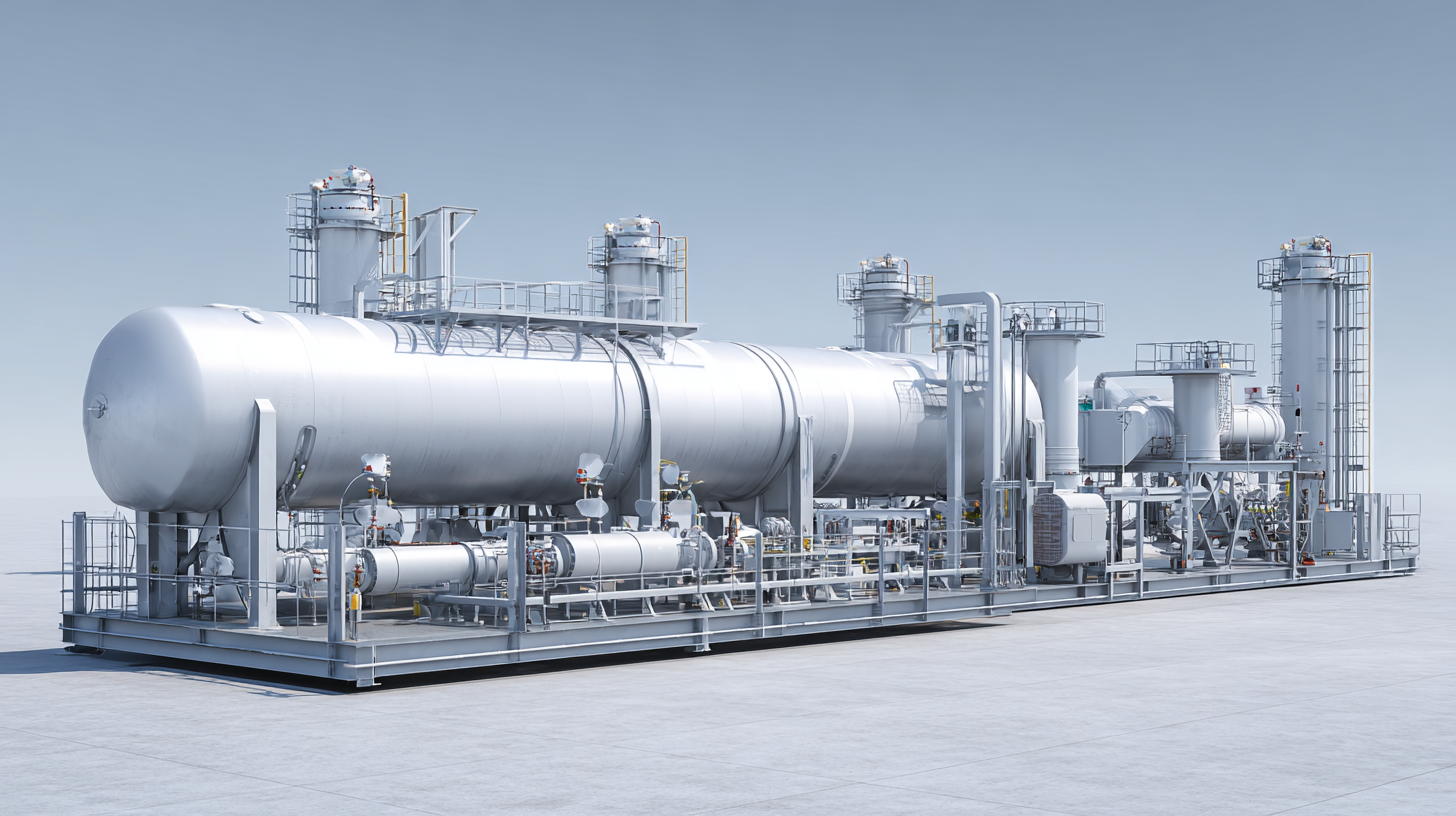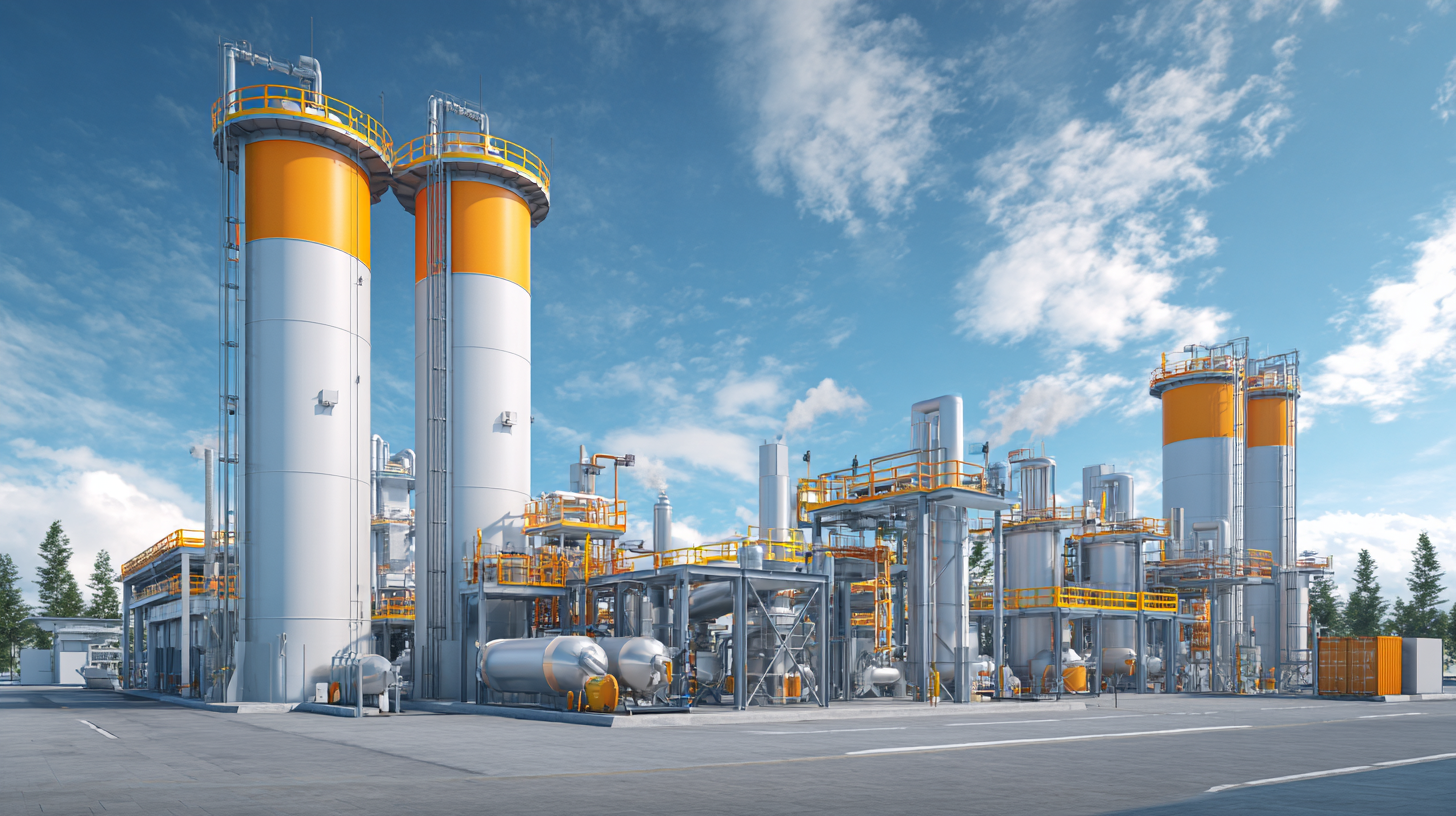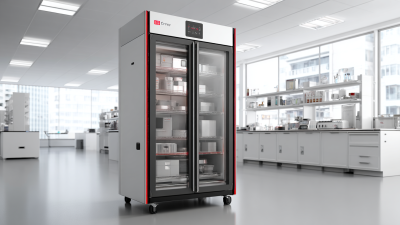
-
Home
-
About us
-
Products
-
Solutions
-
News
-
Blog
-
Contact us
Leave Your Message

As the global demand for clean energy solutions escalates, the role of Cryogenic Air Separation Plants (CASPs) in sustainable energy initiatives becomes increasingly significant. According to a report by Grand View Research, the global air separation plant market size was valued at approximately $5.2 billion in 2020 and is expected to expand at a compound annual growth rate (CAGR) of 6.5% from 2021 to 2028. These plants are pivotal in supplying high-purity gases such as nitrogen and oxygen, which are essential for various applications, including energy production and storage. Furthermore, advancements in cryogenic technology not only bolster efficiency but also align with the industry's goal of reducing carbon footprints. By optimizing the processes within CASPs, we can unlock their full potential as integral components in the transition towards sustainable energy systems, thereby contributing to a greener future.

Innovative cryogenic air separation technology is reshaping the landscape of sustainable energy solutions by enhancing energy efficiency in various industrial applications. This advanced method allows industries to efficiently separate atmospheric gases such as nitrogen and oxygen, providing essential materials for energy production and other critical processes. By operating at extremely low temperatures, cryogenic systems significantly reduce energy consumption compared to traditional separation methods, thereby lowering operational costs and minimizing environmental impact.

Tip: To further optimize the energy efficiency of cryogenic air separation plants, consider implementing real-time monitoring systems. These systems allow for continuous assessment of energy usage and operational performance, enabling timely adjustments to maximize output while minimizing energy expenditure.
Additionally, integrating renewable energy sources into the operation of cryogenic air separation plants can create a symbiotic relationship whereby excess energy from renewable sources is utilized to power these systems. This not only enhances sustainability but also stabilizes energy costs over time. Organizations investing in innovative technologies will benefit from improved energy efficiency and reduced carbon footprints, positioning themselves as leaders in the transition to sustainable energy.
Tip: Collaborate with technology developers and energy consultants who specialize in cryogenic systems to explore tailored solutions that fit your specific operational needs and sustainability goals.
The performance of cryogenic air separation plants (CASPs) is significantly influenced by the integration of advanced materials. These materials have been engineered to withstand extreme low temperatures and to enhance thermal efficiency, thereby optimizing the separation process of air components like oxygen and nitrogen. For example, the development of high-efficiency heat exchangers using advanced composites can lead to reduced energy consumption, which is crucial for improving the sustainability of these plants.
Moreover, novel membranes and adsorbents are being explored to increase the selectivity and permeability during the separation process. By utilizing advanced materials that possess unique properties, CASPs can achieve higher purity levels of gases while minimizing the environmental footprint. These innovations not only boost the economic viability of air separation technologies but also pave the way for their application in various sustainable energy solutions, such as hydrogen production and carbon capture, ultimately contributing to the transition towards cleaner energy systems.
| Performance Metric | Traditional Materials | Advanced Materials | Improvement (%) |
|---|---|---|---|
| Energy Efficiency (kWh/ton O2) | 400 | 350 | 12.5 |
| CO2 Emissions (ton CO2/ton O2) | 0.15 | 0.10 | 33.3 |
| Operational Cost ($/ton O2) | 60 | 50 | 16.7 |
| Plant Lifetime (years) | 20 | 25 | 25.0 |
| Maintenance Frequency (per year) | 8 | 5 | 37.5 |
Digital twin technology is poised to revolutionize the operational efficiency of cryogenic air separation plants, unlocking new avenues for sustainable energy solutions. By creating virtual representations of these complex systems, digital twins enable real-time monitoring and analysis, allowing plants to optimize their performance and energy consumption. This capability is particularly vital in today's climate-focused landscape, where the push for decarbonization drives the need for enhanced efficiency and lower emissions.
The integration of digital twin technology in cryogenic air separation processes can facilitate predictive maintenance, improve safety protocols, and streamline operations. Advanced data analytics and machine learning algorithms can simulate various operational scenarios, identifying potential inefficiencies and mitigating risks. Furthermore, the ongoing advancements in digital twin applications across industries, such as manufacturing and desalination, underscore their significance in enhancing energy efficiency and sustainability. As the industry moves towards 2025 and beyond, the role of digital twins in optimizing cryogenic air separation plants will be crucial for achieving both operational excellence and environmental stewardship.
The cryogenic air separation market is projected to experience significant growth by 2025, driven by increasing demand for oxygen, nitrogen, and argon in various industries. As global energy needs evolve, industries such as healthcare, metallurgy, and food processing are turning to cryogenic technologies for their efficiency and reliability. Innovations in cryogenic methods are also paving the way for more sustainable energy solutions, notably in the context of reducing greenhouse gas emissions and supporting renewable energy sources.
Market trends indicate that investments in cryogenic air separation plants will rise, fueled by government initiatives aimed at promoting cleaner technologies. These plants are becoming critical in carbon capture and storage applications, enabling industries to produce essential gases while minimizing their environmental footprint. As technological advancements continue to enhance the efficiency of these systems, stakeholders are optimistic about the sector's potential, anticipating expansion in both existing and emerging markets by the mid-2020s.

The integration of CO2 capture in cryogenic air separation plants represents a significant advancement toward sustainable energy solutions. Recent data from the International Energy Agency (IEA) indicates that the industrial sector accounts for approximately 24% of global CO2 emissions. By incorporating CO2 capture technologies into cryogenic air separation processes, we have the potential to mitigate these emissions significantly. Cryogenic technologies not only separate air into its constituent gases more efficiently but also offer a unique opportunity to capture CO2 emissions from various industrial operations, thus enhancing the sustainability of energy production.
Furthermore, industry reports suggest that refining cryogenic air separation processes with CO2 capture capabilities can lead to operational efficiencies that reduce energy consumption by 15-30%. This reduction is critical, as energy inputs are a significant component of operational costs in air separation plants. By adopting advanced CO2 capture techniques, facilities can not only contribute to climate change mitigation efforts but also achieve considerable economic benefits. The synergy of enhanced energy efficiency and carbon capture positions cryogenic air separation technologies as pivotal to the future of sustainable industrial practices, steering us closer to global carbon neutrality goals.
This bar chart illustrates the potential CO2 emissions reduction achievable through the integration of CO2 capture technologies in cryogenic air separation plants from 2023 to 2040. As technologies advance and become more widely adopted, significant reductions in emissions can be expected, contributing to sustainable energy solutions.





